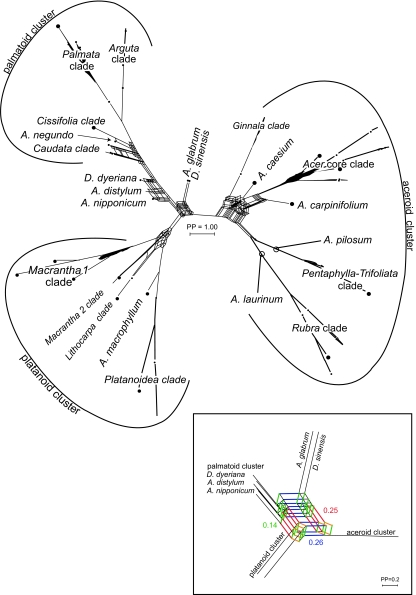Figure 3.
Bipartition network based on Bayes partitions for the 105-consensus-sequence matrix, representing 84 taxa of Acer and Dipteronia, based on the 19,406 post-burnin trees from two parallel MCMC runs. Edge lengths are proportional to the frequency of particular splits (bipartitions). The aceroid, platanoid, and palmatoid clusters each are supported by sets of alternative and semi-congruent splits (box-like structures). Inset: Enlarged central box portion of the splits graph, illustrating phylogenetic interference. The three most frequent alternative splits indicate that A. glabrum + D. sinensis are either sister to the aceroid cluster (blue), the palmatoid cluster, D. dyeriana, A. nipponicum, and A. distylum (red), or the platanoid cluster (green). Less frequent splits are semi-congruent to the most frequent splits. For example, the orange split (semi-congruent to the green split) groups A. glabrum + D. sinensis with A. macrophyllum and the Platanoidea clade.

